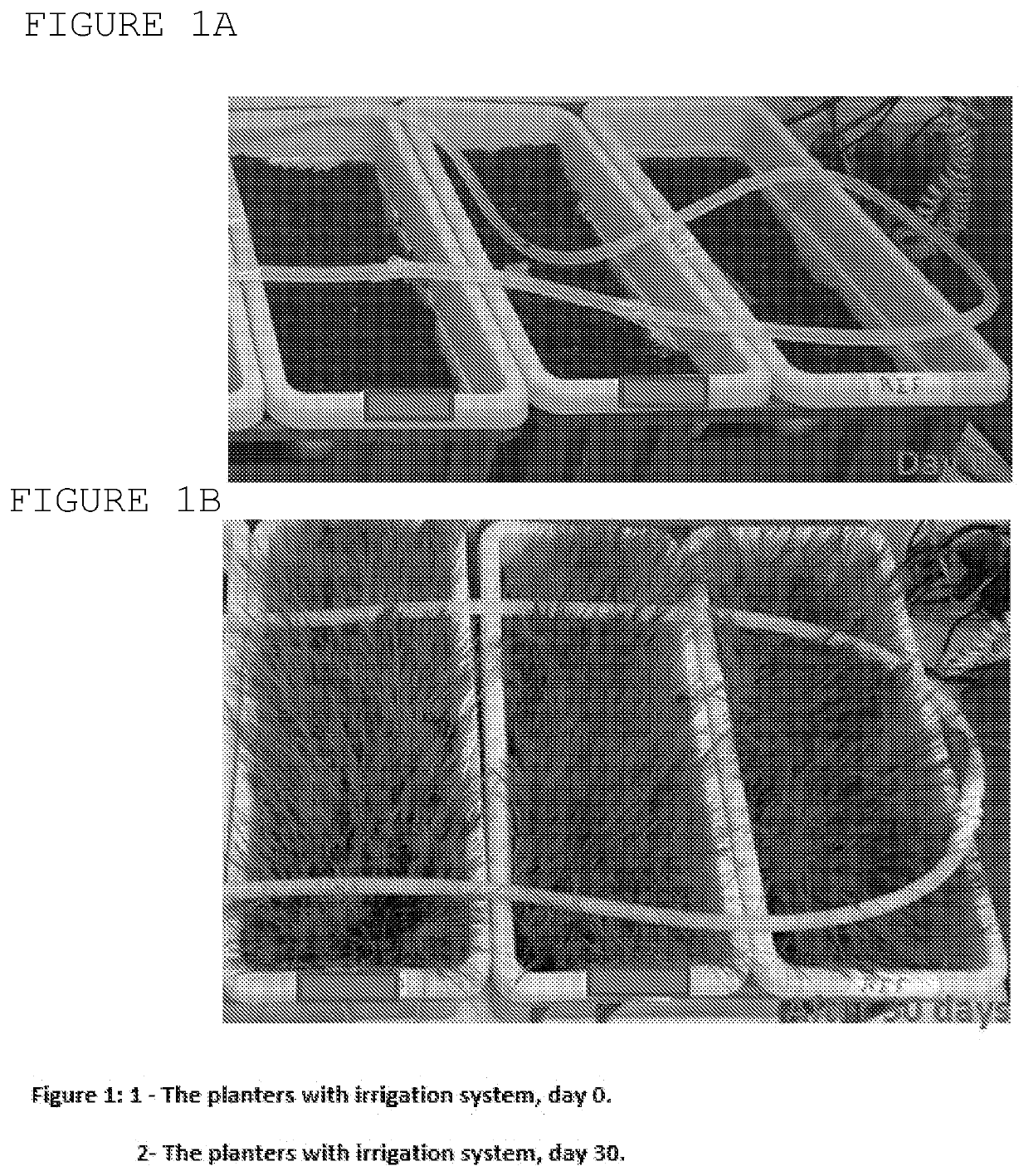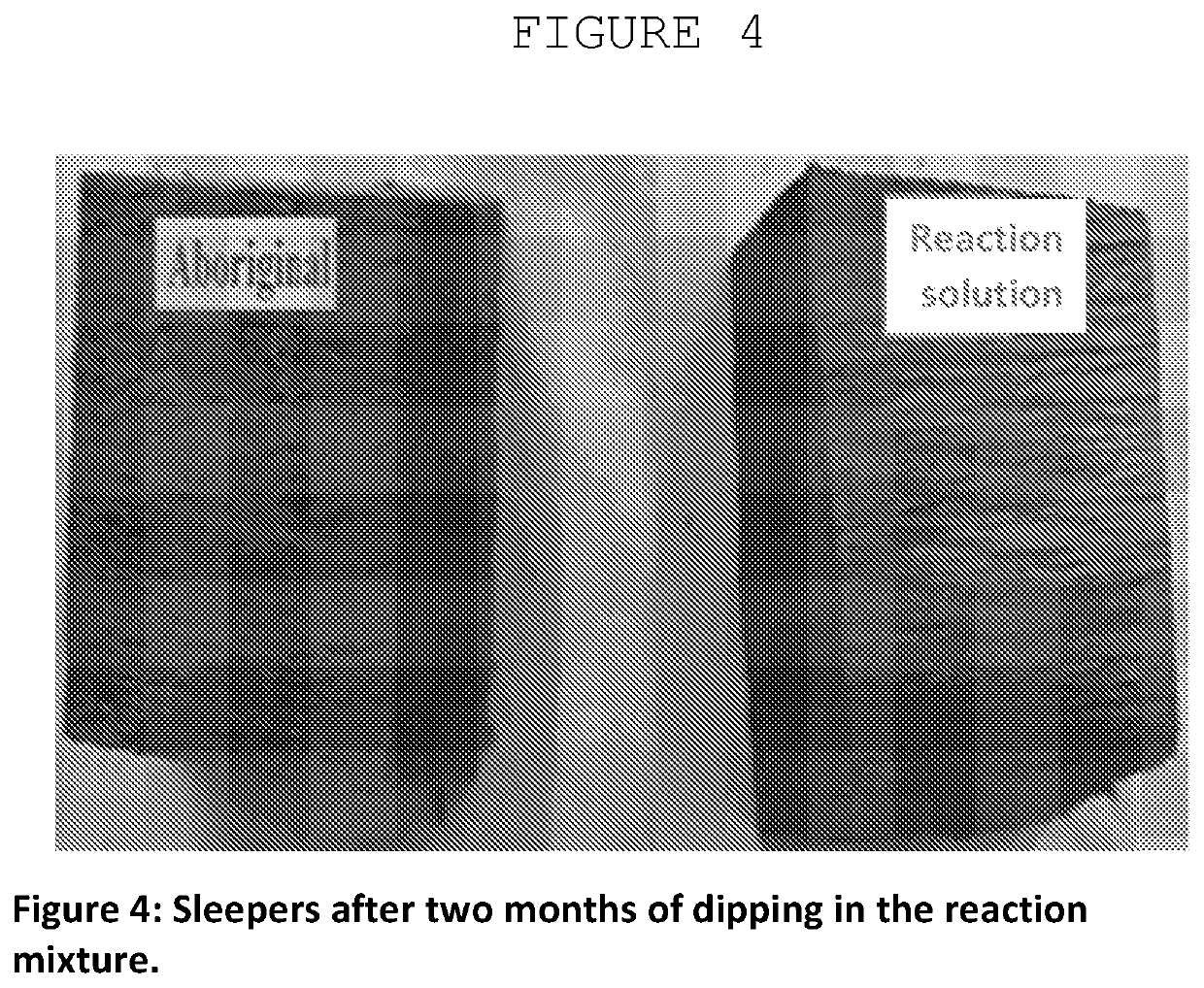Herbicidal compositions
a composition and herbicide technology, applied in the field of herbicide compositions, can solve the problems of increasing the pollution of soil and drinking water, increasing the pollution of underground and drinking water, and increasing the pollution of ground and drinking water
- Summary
- Abstract
- Description
- Claims
- Application Information
AI Technical Summary
Benefits of technology
Problems solved by technology
Method used
Image
Examples
example 1
Preparation of Aqueous Concentrate Formulation of NaOH / KOH / Ca(OH)2
[0040]The solid materials (NaOH / KOH / CaOH2) were added to 100 L barrel, followed by addition of water to reach the saturation limit, ˜48%, of the alkali hydroxides. That is, a total of 480 g of NaOH / KOH (300 g NaOH+180 g KOH) and 120 g Ca(OH)2 in 1 liter of water, such that the mixing ratios are 5:3:2 by weight. A suspension was formed (the amount of Ca(OH)2 exceeded the saturation limit), which was stirred for 10-15 minutes with an industrial vertical agitator (100 rpm, Blossom LTD).
[0041]The aqueous concentrate was diluted prior to use by addition of water in a spray tank down to the working concentrations set out in Examples 4 and 5 to afford a sprayable suspension employed in the field experiments reported hereinbelow.
example 2
Preparation of Water Dispersible Tablet Formulation Of Naoh / Ca(Oh)2
[0042]A mixture consisting of the NaOH / Ca(OH)2 powders (2:1 weight ratio) was blended and homogenized in a solid homogenizer. The blend was compressed in a tablet press (JM16, under pressure of to 320 kg) to produce tablets (˜13 mm diameter). The tablets were mechanically strong and well-dispersible in water. These NaOH / Ca(OH)2 (2:1) tablets were used in the experiment reported in Example 3.
[0043]By a similar procedure, a blend consisting of a ternary combination, NaOH / KOH / CaOH2 (5:3:2), is formed into tablets.
example 3
Weed Control: Experiment in Planters
[0044]20 L planters were each filled with a mixture of approximately 15 L of soil and a fertilizer. Seeds of grass (paspalum grass) were planted in the planters. The grass was grown during one month with irrigation by an automatic system. Photos taken at the beginning of the experiment and at the end of the one-month growth period are shown in FIG. 1. The planters were then divided into three groups: reference (no treatment), A and B.
[0045]Group A: at the end of the month growth period, an aqueous composition comprising 10 g sodium hydroxide and 5 g calcium hydroxide in 1 L of water (in the form of a milky suspension, owing to insolubility of Ca(OH)2) was applied onto each of the planters. The progress of the treatment was evaluated by visual inspection during an additional month. Photos taken at the end of two-month period (one-month treatment) are shown in FIG. 2B, compared to the reference (2A), indicating efficient weed control.
[0046]Group B: ...
PUM
 Login to View More
Login to View More Abstract
Description
Claims
Application Information
 Login to View More
Login to View More - R&D
- Intellectual Property
- Life Sciences
- Materials
- Tech Scout
- Unparalleled Data Quality
- Higher Quality Content
- 60% Fewer Hallucinations
Browse by: Latest US Patents, China's latest patents, Technical Efficacy Thesaurus, Application Domain, Technology Topic, Popular Technical Reports.
© 2025 PatSnap. All rights reserved.Legal|Privacy policy|Modern Slavery Act Transparency Statement|Sitemap|About US| Contact US: help@patsnap.com



